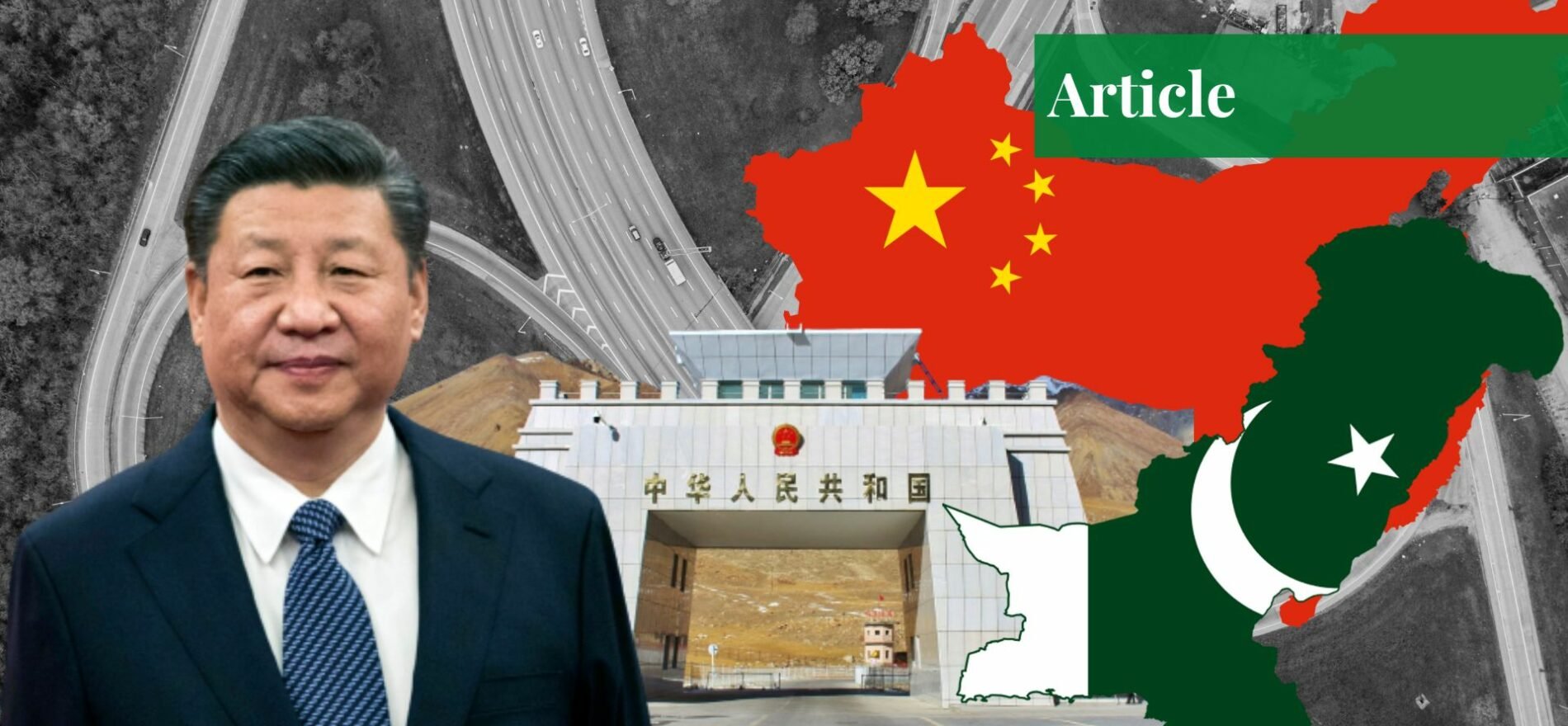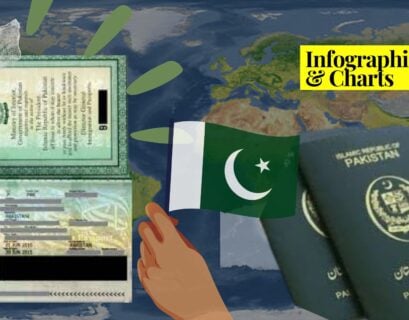Ms Ayesha Shaikh is an MPhil scholar at the National Defense University. She is currently serving as a Research Assistant at Strategic Vision Institute.
CPEC Turns Ten
On 21st April, 2015, in the inaugural ceremony of the China-Pakistan Economic Corridor (CPEC), President Xi Jinping addressed the parliament of Pakistan. During his address, he signified the nature of the relationship between China and Pakistan with a Chinese saying: “Strong wind reveals the strength of grass, and genuine gold stands the test of fire.”
CPEC has been in place for a decade now, and it has made significant advances in the promised sectors; however, it has also posed certain internal and external challenges. On 1st August 2023, China and Pakistan celebrated the completion of a decade of CPEC. Chinese Vice Premier, He Lifeng, paid a three-day visit to Pakistan. He narrated an official letter from President Xi Jinping, congratulating Pakistan on the achievement of this milestone, and encouraging it to enhance cooperation with China across multiple fronts.
Both sides concluded a series of six new documents, including the document on the formulation of joint cooperation committee on CPEC, the document on the export of dry chilies from Pakistan to China, the document on the final report on the feasibility study of KKH-II (Thakot-Raikot), as well as MOUs on industrial workers’ exchange program, export exchange mechanism under CPEC, and findings of the 21st conference of ML-1 commission were also acknowledged.
The development has been significant not only because it determined the official launch of the second phase of CPEC, but also because it debunked the myths surrounding the feasibility and success of CPEC. The success of CPEC can only be determined against the set standards (initial blueprints) as well as the broader implications of the accomplished projects. After the decade-long development, it is safe to say that CPEC has withstood strong winds of criticism and false propaganda. Future prospects, nevertheless, depend upon its progress through the existing challenges.
What CPEC Is and What It Is Not
The evaluation of the success of CPEC first requires the facts to be uncoiled to determine what CPEC is and what it is not. CPEC is the pioneer project of China’s grand project, the Belt and Road Initiative (BRI). BRI aims at paving the way for economic cooperation and inter-regional connectivity that will lead towards collective prosperity. CPEC, thus, focuses on developing a trade corridor from Kashgar to Gwadar.
Blueprints for the initial plan of CPEC constituted three important phases; the short-term phase, the medium-term phase, and the long-term phase. The first phase of CPEC was supposed to focus on energy and infrastructural projects to nurture the ground for the development of Special Economic Zones (SEZs) and industrial build-up in the second and third phases.
Overall, the project holds equal significance for both states. For Pakistan, investment coming from China is crucial to survive the ongoing economic crisis. On the other hand, it holds significance for China because the success of CPEC will determine the success of BRI at large. This complimentary nature of commitment is one significant factor that has ensured the progress of CPEC despite numerous challenges.
In addition to the bilateral benefits that CPEC promises to China and Pakistan, it holds good fortune for other regional actors as well. In July 2020, the Iranian ambassador to Islamabad proposed the idea of the “Golden Ring” of connectivity between China, Russia, Iran, Pakistan, and Turkey. CPEC can prove to be a useful linchpin for this proposal.
However, CPEC has also stirred discontent in some of the states, which have construed it as a security threat. In the Raisina-dialogue 2020, the Indian Naval Chief claimed that CPEC is an intrusion into India’s sovereignty. This air of security dilemma, surrounding China-Pakistan relations in general and CPEC in particular, has added to the number of challenges that it is facing already.
Milestones Achieved in the First Decade
Through the first decade, China has made an investment of around 25 billion dollars. In the energy sector, 14 projects have been completed, 2 are under construction, and 5 more projects are under consideration. A total of 7280MW of energy has been added to the grid, while an additional 4428MW of energy is in process. In the infrastructure sector, a total of 6 projects (1656km) have been completed across provinces, with 18 more projects underway (4244.6km).
In addition to this, CPEC has created more than 192,000 jobs, and the employment rate of Pakistan will further be boosted, as it has an overall potential to generate 1.2 million employment opportunities. Moreover, 4 of a total of 14 projects to develop the Gwadar Port have been completed, including Gwadar Port and free-zone, Gwadar Smart-port city master plan, Pak-China Technical and Vocational Institute at Gwadar, Pak-China Friendship Hospital and Gwadar Eastbay Expressway.
| Phases | Objectives | Major Projects Completed (by 2023) |
| Phase I: 2015-2020 | Energy and Infrastructure developments | 1320MW Sahiwal Coal-fired Power Plant 1320MW Coal-fired Power Plant at Port Qasim Karachi 1320MW China Hub Coal Power Project Hub Balochistan KKH Phase II (Havelian-Thakot Section) Peshawar-Karachi Motorway (Multan-Sukkur Section) Orange Line Metro Train – Lahore Cross Border Optical Fiber Cable (Khunjrab – Rawalpindi) Pilot Project of Digital Terrestrial Multimedia Broadcast (DTMB) Hakla – Development of Port and Free Zone (7 energy and 18 Infrastructure projects in process) |
| Phase II: 2021-2025 | Industrial development, Special Economic Zones | Gwadar Smart Port City Master Plan, Pak-China Technical and Vocational Institute at Gwadar, Gwadar Eastbay Expressway |
| Phase III: 2026-2023 | Tourism and Human Resource cooperation | – |
Some of Phase I projects, which were supposed to be completed by 2020, are still in progress. Therefore, Phase I cannot technically be considered completed, despite a delay of 3 years. The milestones achieved are significant enough to consider its progress but the challenges that CPEC faces, cannot be denied.
Internal Challenges and Cross-Border Exploitations
The delays in the actual plan of CPEC are subject to numerous challenges. Internally, political and economic instability in Pakistan has hindered the smooth development of the projects, considering the fact that the upcoming visit of Chinese President Xi Jinping is delayed till after the elections in Pakistan. China, however, has ensured support to Pakistan to overcome the challenges.
Recently, China provided a relaxation of 2 years to Pakistan, to pay back the loan of 2.5 billion dollars. Nevertheless, a temporary internal state of affairs provides space for external actors to take malign actions. Penetrating terrorist elements from across the border as well as implicit and explicit opposition from India and the United States are key external challenges, posed to the timely completion of CPEC.
CPEC: Opportunity or Priority for Pakistan?
External discontent against CPEC is manifesting itself in the form of anti-CPEC propaganda, or alternative security engagement. The day after the 10th anniversary of CPEC, the federal cabinet of Pakistan approved a proposal for signing a security pact with the United States. This does not imply that Pakistan is being appealed by alternative baits, rather it determines clear security and economic preferences of Pakistan.
Critics of CPEC do not have any alternative proposal to promise regional connectivity and economic cooperation that the CPEC looks forward to ensuring. Therefore, despite all the challenges, CPEC will be the uncontested priority for Pakistan.
If you want to submit your articles, research papers, and book reviews, please check the Submissions page.
The views and opinions expressed in this article/paper are the author’s own and do not necessarily reflect the editorial position of Paradigm Shift.


















